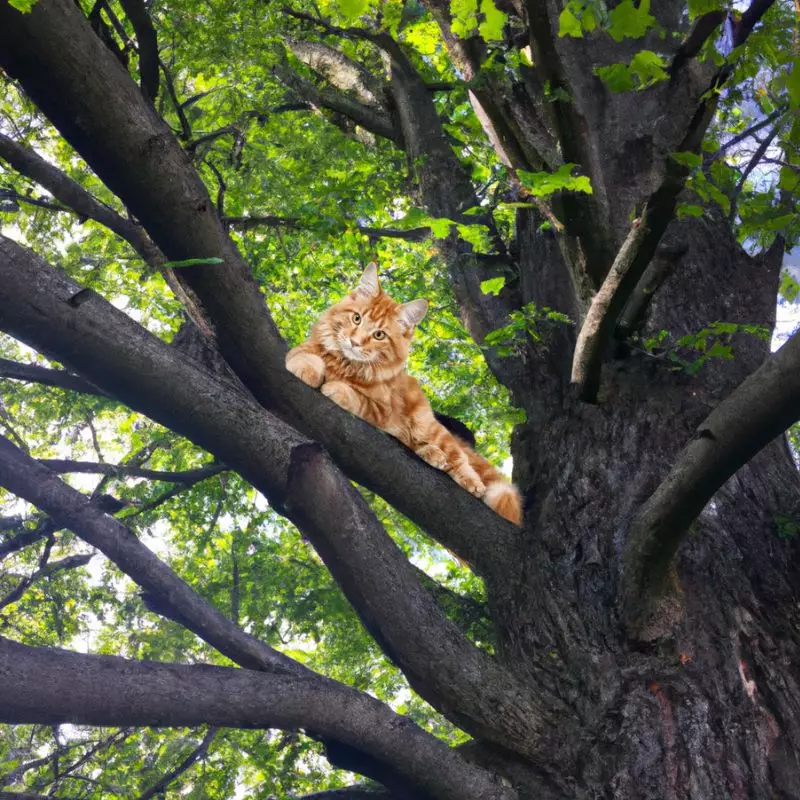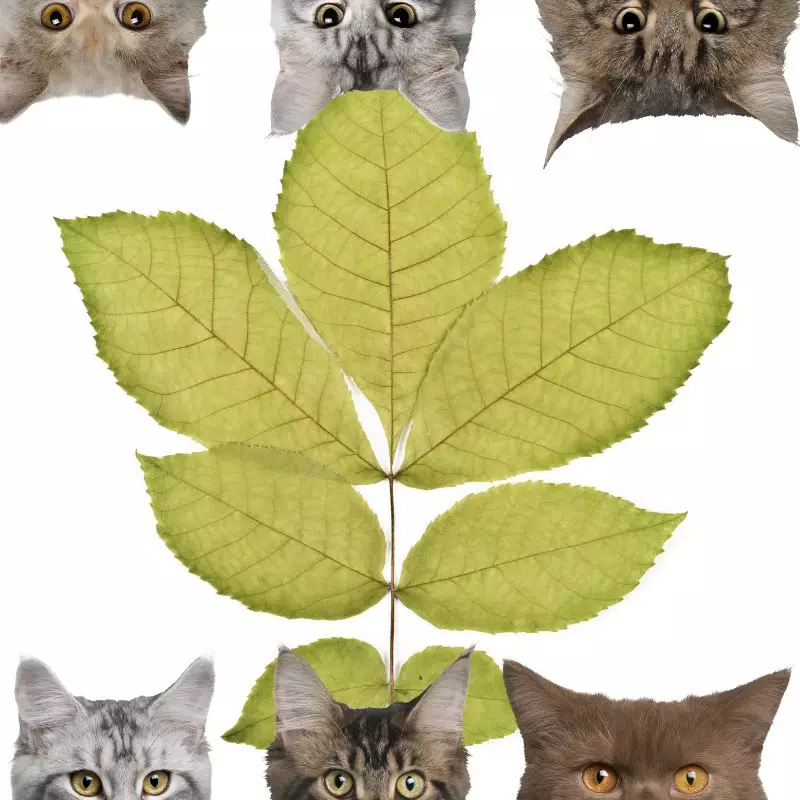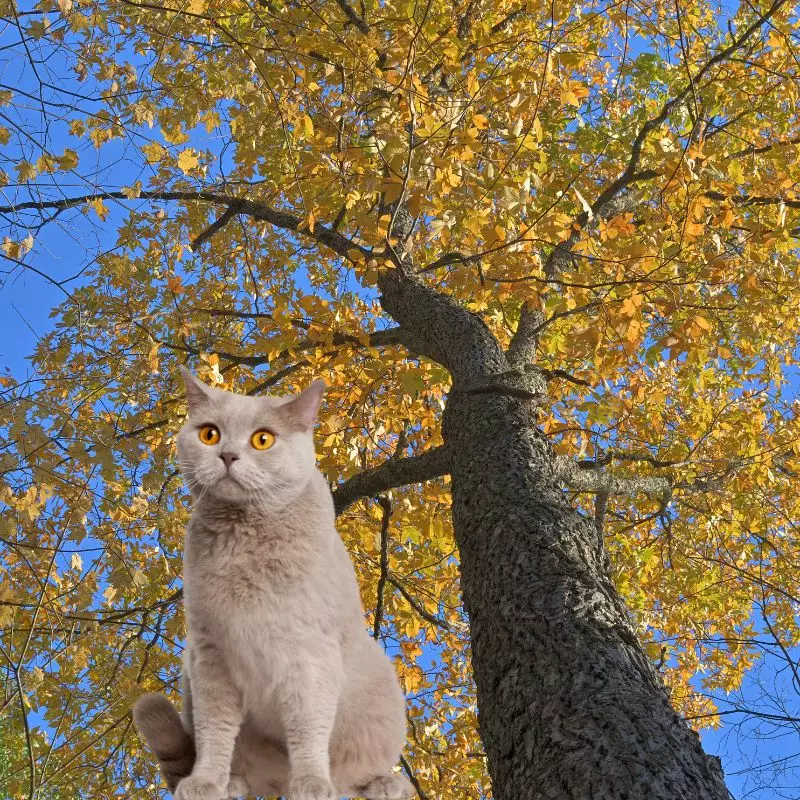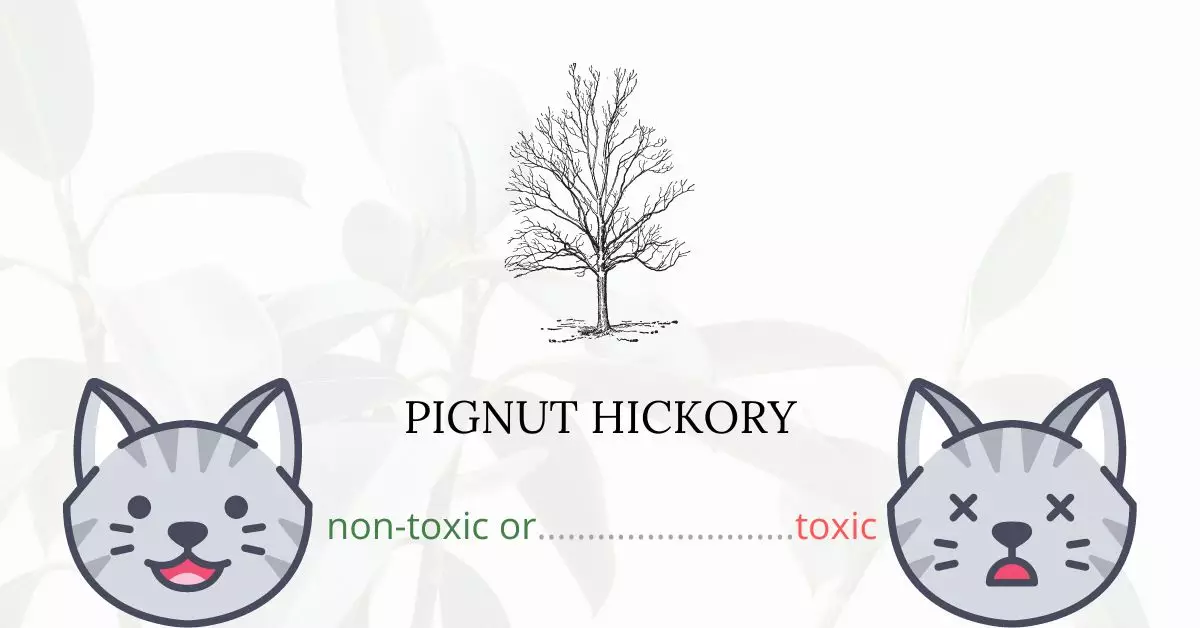No, pignut hickory is not poisonous to cats. It is safe to have a hickory tree in an environment where cats are present.
This article has been carefully crafted in collaboration with a team of experienced DVMs (Doctors of Veterinary Medicine). Through their invaluable insights and contributions, we strive to offer accurate and up-to-date information regarding the potential risks associated with various plants, focusing on the Pignut Hickory in this context. Our research is reinforced by authoritative sources, including but not limited to the ASPCA (American Society for the Prevention of Cruelty to Animals) and PetMD.
As further validation, pignut hickory, like many hickory species, is listed as non-toxic on ASPCA’s official website. Beyond the safety for cats, pignut hickory is also considered harmless for canines and horses.
Can Cats Eat Pignut Hickory?

Pignut hickories do not pose threat to cats. In case your cat has eaten a piece of this plant, it will not cause him any harm. However, pignut hickory or any other plant is not advisable to be included in a cat’s regular diet.
Carnivores, like cats, do not have the required enzymes to properly digest plant materials in their stomachs. Because cats are not capable of digesting plants, eating excessive amounts of plants can cause them to suffer from indigestion. Other gastrointestinal problems may also occur if they will continue to eat plants.
What is Pignut Hickory?

Pignut hickory has a lot of common names including Broom Hickory, Coast Pignut Hickory, Red Hickory, Small Fruited Hickory, Smoothbark Hickory, Swamp Hickory, Sweet Pignut Hickory, and Switch Hickory.
Scientifically known as Carya Glabra, pignut hickory grows as a medium to a big deciduous tree. It is endemic to the eastern and central United States. It is also found in some regions of Canada.
It is a sturdy, tall tree, typical of hickories, with a straight trunk and thick, oval to rounded appearance. The strength of the wood makes it valuable. Numerous animal species consume the bitter nuts that the pignut hickory tree produces.
Throughout its distribution, pignut hickory typically grows on dry ridgetops and side slopes, although it is also widespread in wet areas, especially in the Alps and Piedmont. Pignut hickory has been seen in the Great Smoky Mountains on dry sandy soils at low elevations.
Keeping Cats Away From Pignut Hickory

The quickest fix is to move plants out of the way. The best location is high off the ground. To protect your plants from your cats’ claws, consider building floating shelves or hanging them from the ceiling.
Heavy and large plants may be placed in an off-limits area. Homes with little natural light or wall space will need more inventive solutions.
Another simple method for keeping cats away from plants is a physical barrier. Oftentimes, covering the ground with stones will be sufficient to prevent cats from digging. Cats that scratch and chew could require a bit more discouraging behavior training.
Cats will steer clear of plants that taste or smell bad. Since cats don’t enjoy the scent of citrus, lining the soil with the rinds of citrus will help to drive them away. Be aware though that doing this method will draw fruit flies and other garden pests.
Plants to Avoid For Your Cats
If you are a cat owner and unsure if the plants growing in your yard are harmful to your cats, check out this list of toxic plants for cats. You can also check our list of non-toxic plants for cats.





